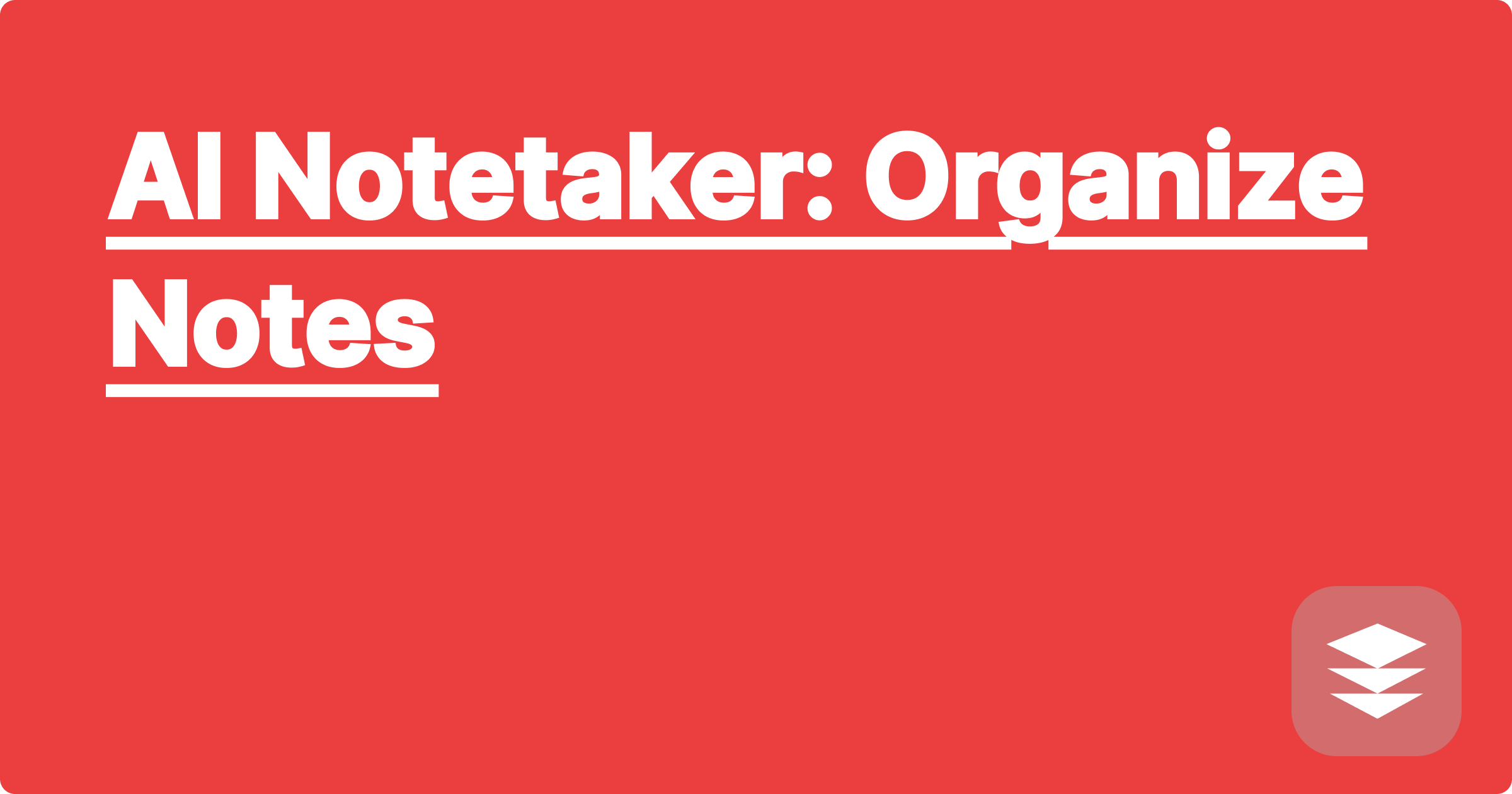
STEM fields are notorious for their dense, complex information, often delivered at a rapid pace. Keeping up with lectures, readings, and research materials can be a constant struggle, leading to disorganized notes and difficulty synthesizing information. Artificial intelligence offers a powerful solution to this challenge, providing tools to streamline note-taking, organize information, and facilitate deeper understanding. AI-powered note-takers can transform how STEM students and researchers manage the deluge of information they encounter, ultimately boosting academic productivity and success.
For STEM students and researchers, effective note-taking is crucial for success. The ability to quickly capture, organize, and synthesize information from various sources directly impacts comprehension, retention, and the ability to apply knowledge to problem-solving. AI note-takers provide a significant advantage by automating tedious tasks like transcription and summarization, freeing up cognitive resources for deeper engagement with the material. This allows students to focus on understanding concepts rather than struggling to keep up with the flow of information, leading to improved learning outcomes and research productivity.
Traditional note-taking methods often fall short in STEM disciplines. Handwritten notes can be messy, time-consuming, and difficult to search. Typed notes, while searchable, can quickly become overwhelming and lack the structure needed for effective review. Furthermore, STEM subjects often involve complex equations, diagrams, and specialized terminology that are difficult to capture accurately and efficiently using conventional methods. This leads to fragmented notes, gaps in understanding, and difficulty connecting related concepts. The sheer volume of information presented in STEM courses and research settings exacerbates this problem, creating a significant barrier to effective learning and knowledge synthesis.
AI tools like ChatGPT, Claude, and Wolfram Alpha offer innovative solutions to the challenges of STEM note-taking. These tools can transcribe lectures in real-time, summarize key concepts, and even answer questions about the material. ChatGPT and Claude, for instance, can be used to generate concise summaries of lengthy research papers or create flashcards for reviewing technical terms. Wolfram Alpha excels at handling complex calculations and providing step-by-step solutions to mathematical problems, making it an invaluable tool for engineering and physics students. By leveraging these AI capabilities, STEM students and researchers can significantly improve their note-taking efficiency and comprehension.
Using AI for note-taking can be seamlessly integrated into any workflow. First, choose an AI tool that best suits your needs. For example, if you need help with mathematical computations and data analysis, Wolfram Alpha might be the best choice. If you need assistance with summarizing text and generating explanations, ChatGPT or Claude might be more suitable. Next, input your raw study material, which could be lecture recordings, research papers, or even handwritten notes. The AI tool will then process this information and provide a structured output. This could be in the form of a summarized transcript, key takeaways, or even a set of practice questions. Finally, review and refine the output generated by the AI. This is a crucial step to ensure accuracy and personalize the notes to your specific learning style.
Consider a chemical engineering student struggling to keep up with a lecture on reaction kinetics. They could use an AI tool like Otter.ai to transcribe the lecture in real-time. Then, they could input the transcript into ChatGPT and ask it to summarize the key concepts, such as rate laws and reaction mechanisms. ChatGPT could even provide examples and explanations to clarify complex concepts. Alternatively, a physics student working on a problem involving projectile motion could use Wolfram Alpha to calculate the trajectory of the projectile given its initial velocity and angle. Wolfram Alpha could then display the solution graphically, providing a visual representation of the projectile's path. These examples demonstrate how AI can be used to enhance note-taking and problem-solving in various STEM disciplines.
Another example involves a biology student researching the effects of climate change on coral reefs. They could use an AI tool to summarize multiple research papers on the topic, extracting key findings and identifying common themes. The AI could also help organize the information into a structured outline, making it easier to write a research paper or prepare a presentation. Furthermore, the student could use the AI to generate questions about the material, prompting deeper reflection and critical thinking.
To maximize the benefits of AI note-takers, consider these strategies. First, actively engage with the material. Don't simply rely on the AI to do all the work. Review the AI-generated summaries and add your own notes and insights. Second, experiment with different AI tools to find the ones that best suit your learning style and specific needs. Each tool has its strengths and weaknesses, so it's important to find the right combination for your workflow. Third, use AI to generate practice questions and test your understanding of the material. This will help you identify areas where you need to focus your study efforts. Finally, remember that AI is a tool to enhance, not replace, your own learning process. Use it strategically to improve your note-taking efficiency and deepen your understanding of STEM concepts.
In conclusion, AI-powered note-takers offer a transformative approach to managing the complexities of STEM education and research. By automating tedious tasks and providing intelligent insights, these tools empower students and researchers to focus on what truly matters: understanding and applying knowledge. Embracing these technologies can unlock new levels of academic success and pave the way for groundbreaking discoveries. Start exploring the available AI tools and discover how they can revolutionize your learning and research journey. Experiment with different approaches and integrate these tools into your workflow to maximize their potential. The future of STEM learning is here, and it's powered by AI.